Germany
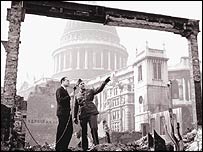 In March or 1941, the United States was largely considered neutral, so we could provide the countries, who were fighting Adolf Hitler, with war material. It was during this period of time, that the United Kingdom, an old enemy of the United States, since the United States fought against them for our independence, needed our help. Of course, we were allies by that time, and so the thought of a loan to the UK was not out o the question. The UK had been fighting against Adolf Hitler’s Germany army for a while by then, and funds were dwindling. The US loaned $4.33 billion to Britain in 1945, while Canada loaned US$1.19 billion in 1946, at a rate of 2% annual interest. It was a good deal, but in the end, the amount paid back was nearly double the amounts loaned in 1945 and 1946.
In March or 1941, the United States was largely considered neutral, so we could provide the countries, who were fighting Adolf Hitler, with war material. It was during this period of time, that the United Kingdom, an old enemy of the United States, since the United States fought against them for our independence, needed our help. Of course, we were allies by that time, and so the thought of a loan to the UK was not out o the question. The UK had been fighting against Adolf Hitler’s Germany army for a while by then, and funds were dwindling. The US loaned $4.33 billion to Britain in 1945, while Canada loaned US$1.19 billion in 1946, at a rate of 2% annual interest. It was a good deal, but in the end, the amount paid back was nearly double the amounts loaned in 1945 and 1946.
The United States was pulled into World War II shortly after, when Japan attacked Pearl Harbor. That marked to end of the program to provide military materials, because the United States was no longer considered neutral. At this point, the United States was very much needed in a very different way, and could not be neutral and be an effective help, but they also had a score to settle, and it could not be handled on the sidelines. The United States had hoped to sit this one out, but that was not to be. The Axis of Evil was winning against the Allied Nations, and they needed help, but it was the boldness of the attack on Pearl Harbor that finally awoke the sleeping giant that was the United States. The United States victory over Japan in the Battle of Midway was the turning point of the war in the Pacific. Then Germany invaded the Soviet Union. The Soviet Union defeated Germany at Stalingrad, marking the turning point of the war in Eastern Europe. As we all know, in the end the Allies were victorious in World War II.
There are still World War I debts owed to and by Britain. Since a moratorium on all debts from that conflict was agreed at the height of the Great Depression, no repayments have been made to or received from other nations since 1934. Despite the favorable rates there were six years in which Britain deferred payment because of economic or political crises. Britain settled its World War II debts to the United States and Canada when it paid the final 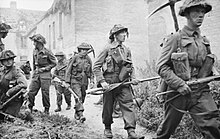 two installments in 2006. The payments of $83.25 million to the US and US$22.7 million to Canada are the last of 50 installments since 1950. Upon the final payments, the UK will have paid back a total of $7.5 billion to the US and US$2 billion to Canada. “This week we finally honor in full our commitments to the United States and Canada for the support they gave us 60 years ago,” said Treasury Minister Ed Balls at the time of those final payments. “It was vital support which helped Britain defeat Nazi Germany and secure peace and prosperity in the post-war period. We honor our commitments to them now as they honored their commitments to us all those years ago,” he added.
two installments in 2006. The payments of $83.25 million to the US and US$22.7 million to Canada are the last of 50 installments since 1950. Upon the final payments, the UK will have paid back a total of $7.5 billion to the US and US$2 billion to Canada. “This week we finally honor in full our commitments to the United States and Canada for the support they gave us 60 years ago,” said Treasury Minister Ed Balls at the time of those final payments. “It was vital support which helped Britain defeat Nazi Germany and secure peace and prosperity in the post-war period. We honor our commitments to them now as they honored their commitments to us all those years ago,” he added.
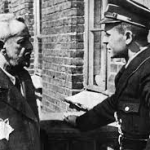
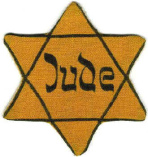 Over the centuries, people have gone to great lengths to humiliate their enemies. The worst thing for the Jewish people was that over the centuries, there have been so many enemies. To this day, it doesn’t matter that Israel is one of the smallest nations in the world, the Muslim nations don’t even want them to have that small area, and the Muslims weren’t the only enemy of the Jewish people either. The Jews of Europe were legally forced to wear badges or distinguishing garments, like pointed hats, to let everyone know who they were. This practice began at least as far back as the 13th century. It continued throughout the Middle Ages and Renaissance, but was then largely phased out during the 17th and 18th centuries. With the coming of the French Revolution and the emancipation of western European Jews throughout the 19th century, the wearing of Jewish badges was abolished in Western Europe.
Over the centuries, people have gone to great lengths to humiliate their enemies. The worst thing for the Jewish people was that over the centuries, there have been so many enemies. To this day, it doesn’t matter that Israel is one of the smallest nations in the world, the Muslim nations don’t even want them to have that small area, and the Muslims weren’t the only enemy of the Jewish people either. The Jews of Europe were legally forced to wear badges or distinguishing garments, like pointed hats, to let everyone know who they were. This practice began at least as far back as the 13th century. It continued throughout the Middle Ages and Renaissance, but was then largely phased out during the 17th and 18th centuries. With the coming of the French Revolution and the emancipation of western European Jews throughout the 19th century, the wearing of Jewish badges was abolished in Western Europe.
Enter Hitler. The Nazis, under Hitler’s direction, resurrected this practice as part of humiliation tactics during the Holocaust. Reinhardt Heydrich, chief of the Reich Main Security Office, first recommended that Jews should wear identifying badges following the Kristallnacht pogrom of November 9 and 10, 1938. Hitler liked the idea, because Hitler hated the Jews. Shortly after the invasion of Poland in September 1939, local German authorities began introducing mandatory wearing of badges. By the end of 1939, all Jews in the newly-acquired Polish territories were required to wear badges. Upon invading the Soviet Union in June 1941, the Germans again required the Jews in the newly-conquered lands to wear badges. Throughout the rest of 1941 and 1942, Germany, its satellite states and western occupied territories adopted regulations stipulating that Jews wear identifying badges. On May 29, 1942, on the advice of Nazi propaganda minister Joseph Goebbels, Adolf Hitler orders all Jews in occupied Paris to wear an identifying yellow star on the left side of their coats. Only in Denmark, where King Christian X is said to have threatened to wear the badge himself if it were imposed on his country’s Jewish population, were the Germans unable to impose such a regulation. Too bad some of the other nations did not stand up for the Jewish people too.
The Yellow Star was imposed on the Jewish people as part of many psychological tactics aimed at isolating and dehumanizing the Jews of Europe and especially by the Nazis. They were being directly marked as being different and inferior to everyone else. It also allowed the Germans to facilitate their separation from society and subsequent ghettoization, which ultimately led to the deportation and murder of 6 million Jews. Those who failed or refused to wear the badge risked severe punishment, including death. For example, the Jewish Council (Judenrat) of the ghetto in Bialystok, Poland announced that “… the authorities have warned that severe punishment – up to and including death by shooting – is in store for Jews who do not wear the yellow badge on back and front.” The star took on different forms in different regions, but everyone in the area knew what it 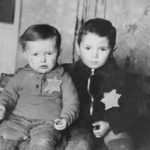
 meant. Of course, the Jewish people hated the badge for what it symbolized, even though the Star of David had stood for the Jewish people since about the 12th century. While the Star of David, known as the Magen David, has continued to be the unofficial symbol of the Jewish people, even on their flag, the Menorah continues to be the official symbol of Judaism (The Jewish people). It seems to me that they would not really want the Star of David after all of the persecution that has been associated with it, but I guess it could be looked at as a badge of honor, as they, as a people survived the persecution.
meant. Of course, the Jewish people hated the badge for what it symbolized, even though the Star of David had stood for the Jewish people since about the 12th century. While the Star of David, known as the Magen David, has continued to be the unofficial symbol of the Jewish people, even on their flag, the Menorah continues to be the official symbol of Judaism (The Jewish people). It seems to me that they would not really want the Star of David after all of the persecution that has been associated with it, but I guess it could be looked at as a badge of honor, as they, as a people survived the persecution.
 For many years, I have admired Albert Einstein. His mind and his level of intelligence intrigued me, as did his quirkiness. When you think of a genius, your mind automatically produces a picture of a very organized person, who is able to handle any situation, but even geniuses have their issues with things. One well know “weakness” for Einstein was the fact that if something can be written down, it need not take up space in his brain. His brain was very full after all, and clutter was always an issue. That said, if he couldn’t find his train ticket…for the train he took every day from home to work and back…he didn’t know at which stop to get off, because he relied on his ticket to tell him that. I don’t think most of us could even begin to filter our brain in such a way…but Einstein could, and did.
For many years, I have admired Albert Einstein. His mind and his level of intelligence intrigued me, as did his quirkiness. When you think of a genius, your mind automatically produces a picture of a very organized person, who is able to handle any situation, but even geniuses have their issues with things. One well know “weakness” for Einstein was the fact that if something can be written down, it need not take up space in his brain. His brain was very full after all, and clutter was always an issue. That said, if he couldn’t find his train ticket…for the train he took every day from home to work and back…he didn’t know at which stop to get off, because he relied on his ticket to tell him that. I don’t think most of us could even begin to filter our brain in such a way…but Einstein could, and did.
Einstein was a gifted scientist and mathematician. He was most famous for his theory of relativity and the resulting formula relating mass and energy…E = MC². He was the winner of 1921 Nobel Prize in physics for his work on the photoelectric effect, which is also known as the Hertz effect. Einstein was born in Ulm, in the Kingdom of Württemberg in the German Empire, on March 14, 1879. His parents were Hermann Einstein, a salesman and engineer, and Pauline Koch. He didn’t feel the need to celebrate his birthday,saying “It is a known fact that I was born, and that is all that is necessary.” Friends, colleagues and complete strangers still felt the need to send telegrams, cards, letters, gifts, and an elaborate birthday cake.
Being a Jewish man, circumstances in Germany became life threatening for Einstein in the early 1930s, so early in 1933, while on a trip to the United States, he knew he could not go home again, so he moved permanently  to the United States, and worked at Princeton University…a career that would take him to the end of his life on April 18, 1955. Einstein could have been saved, but when he was asked if he wanted to undergo surgery, he refused, saying, “I want to go when I want to go. It is tasteless to prolong life artificially. I have done my share; it is time to go. I will do it elegantly.” After an autopsy, Einstein’s body was cremated and his ashes spread in an undisclosed location.
to the United States, and worked at Princeton University…a career that would take him to the end of his life on April 18, 1955. Einstein could have been saved, but when he was asked if he wanted to undergo surgery, he refused, saying, “I want to go when I want to go. It is tasteless to prolong life artificially. I have done my share; it is time to go. I will do it elegantly.” After an autopsy, Einstein’s body was cremated and his ashes spread in an undisclosed location.
After his passing, another of the multiple quirky aspects of Einstein’s personality came to light when LIFE magazine wrote about a famous picture taken in Albert Einstein’s Princeton office. Einstein’s desk was just as he left it. Here, the picture says, is where Einstein worked, dreamed, lived his singular, principled life to its fullest. “When I was young, all I wanted and expected from life was to sit quietly in some corner doing my work without the public paying attention to me,” said Einstein after being honored at a social function. “And now see what has become of me.”
When I look and Einstein’s desk, it takes me back to the many times my own desk has looked exactly like that. It is another way that the famed scientific and mathematical genius and I are alike. Now, I do not claim to have the IQ of this man, but we do have a few things in common, and the ability to work on top of a stack of papers seems to be one of them. Maybe that and the ability to somewhat filter things out of my mind if they are stored in my phone which could be the same thing as filtering because I have it written down. And because of my shy side, I suppose I can understand his concern over public attention, and yet knowing that sometimes it can’t be helped. When I look at his desk, I can see a man whose mind was fill with many thoughts, making it easy to  lose himself in his thoughts to the point of seeming to ignore those around him. Those who met Einstein recalled his human side. He “walked to work or rode the bus in bad weather; visited the neighbors’ newborn kittens; greeted carolers on winter nights; refused to update his eyeglass prescription; and declined to wear socks because they would get holes in them. But he didn’t seem to mind fuzzy slippers!” He was his own man with his own ideas, and if those ideas didn’t make sense to those around him, it was simply not his problem. On April 18, 1955, Albert Einstein died soon after a blood vessel burst near his heart. The world mourned Einstein’s death, but true to form, at his request, his office and house were not turned into memorials.
lose himself in his thoughts to the point of seeming to ignore those around him. Those who met Einstein recalled his human side. He “walked to work or rode the bus in bad weather; visited the neighbors’ newborn kittens; greeted carolers on winter nights; refused to update his eyeglass prescription; and declined to wear socks because they would get holes in them. But he didn’t seem to mind fuzzy slippers!” He was his own man with his own ideas, and if those ideas didn’t make sense to those around him, it was simply not his problem. On April 18, 1955, Albert Einstein died soon after a blood vessel burst near his heart. The world mourned Einstein’s death, but true to form, at his request, his office and house were not turned into memorials.
 On April 11, 1945, the American Third Army liberated the Buchenwald concentration camp, near Weimar, Germany. Buchenwald was a camp that will be judged second only to Auschwitz in the horrors it imposed on its prisoners, but on this day in 1945, those horrors came to an end. The camp held thousands of prisoners, mostly slave laborers, many of whom were required to work 15 hour days. There were no gas chambers at Buchenwald, but hundreds, and sometimes thousands of prisoners, died every month from disease, malnutrition, beatings, and executions. Doctors performed medical experiments on inmates, testing the effects of viral infections and vaccines. Beginning in 1941, a number of physicians and scientists carried out a varied program of medical experimentation on prisoners at Buchenwald in special barracks in the northern part of the main camp. Medical experiments aimed at testing the efficacy of vaccines and treatments against contagious diseases such as typhus, typhoid, cholera, and diphtheria resulted in hundreds of deaths. The people these doctors were experimenting on were considered, non-human, and so their lives, or the loss thereof, were of little or no consequence to these evil doctors and scientists.
On April 11, 1945, the American Third Army liberated the Buchenwald concentration camp, near Weimar, Germany. Buchenwald was a camp that will be judged second only to Auschwitz in the horrors it imposed on its prisoners, but on this day in 1945, those horrors came to an end. The camp held thousands of prisoners, mostly slave laborers, many of whom were required to work 15 hour days. There were no gas chambers at Buchenwald, but hundreds, and sometimes thousands of prisoners, died every month from disease, malnutrition, beatings, and executions. Doctors performed medical experiments on inmates, testing the effects of viral infections and vaccines. Beginning in 1941, a number of physicians and scientists carried out a varied program of medical experimentation on prisoners at Buchenwald in special barracks in the northern part of the main camp. Medical experiments aimed at testing the efficacy of vaccines and treatments against contagious diseases such as typhus, typhoid, cholera, and diphtheria resulted in hundreds of deaths. The people these doctors were experimenting on were considered, non-human, and so their lives, or the loss thereof, were of little or no consequence to these evil doctors and scientists.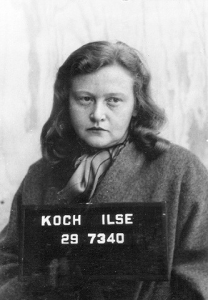
Among the camp’s most gruesome characters was Ilse Koch, wife of the camp commandant, who was infamous for her sadism. Her cruelty and heinous acts earned her the nickname, The Witch of Buchenwald. She often beat prisoners with a riding crop, and collected lampshades, book covers, and gloves made from the skin of camp victims. She was always in attendance when new prisoners were brought in. She required that they be stripped so she could examine their skin. When she found something she liked, the prisoner was killed and their skin removed for her to use. Koch was truly an evil person, and in the end, I think it all came back to haunt her, because after she was tried for a second time and given a life sentence she hanged herself at Aichach women’s prison on September 1, 1967. She was 60 years old. She was said to suffer from delusions and had become convinced that concentration camp survivors would abuse her in her cell. I think her evil ways drove her insane.
As American forces closed in on the Nazi concentration camp at Buchenwald, on April 11, 1945, Gestapo headquarters at Weimar telephoned the camp administration to announce that it was sending explosives to blow up any evidence of the camp…including its inmates. What the Gestapo did not know was that the camp administrators had already fled in fear of the Allies. A prisoner answered the phone and informed headquarters  that explosives would not be needed, as the camp had already been blown up, which, of course, was not true. That act of quick thinking, saved countless lives. The sights the Allied troops saw as they entered the camps must have been sickening. People emaciated due to starvation, the smell of death everywhere, the signs of the horrific experiments that took place there. This place should never have been allowed to exist, and yet here it was. The prisoners who had managed to survive were most likely staring in stunned disbelief, not quite able to believe their eyes. Nevertheless, they had survived and they were liberated. Among those saved by the Americans was Elie Wiesel, who would go on to win the Nobel Peace Prize in 1986.
that explosives would not be needed, as the camp had already been blown up, which, of course, was not true. That act of quick thinking, saved countless lives. The sights the Allied troops saw as they entered the camps must have been sickening. People emaciated due to starvation, the smell of death everywhere, the signs of the horrific experiments that took place there. This place should never have been allowed to exist, and yet here it was. The prisoners who had managed to survive were most likely staring in stunned disbelief, not quite able to believe their eyes. Nevertheless, they had survived and they were liberated. Among those saved by the Americans was Elie Wiesel, who would go on to win the Nobel Peace Prize in 1986.
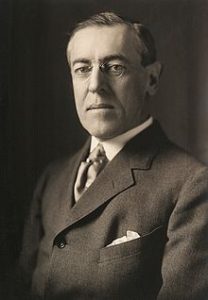 The United States has tried to stay out of most of the wars the rest of the world has become involved in, but sometimes circumstances have drawn us into wars we didn’t want to enter. World War I is a prime example of just such a situation. On February 26, 1917, President Woodrow Wilson learns of the so-called Zimmermann Telegram. The telegram was a message from German Foreign Secretary Arthur Zimmermann to the German ambassador to Mexico proposing a Mexican-German alliance in the event of a war between the United States and Germany. This telegram was a crucial step toward the entry of the United States into World War I.
The United States has tried to stay out of most of the wars the rest of the world has become involved in, but sometimes circumstances have drawn us into wars we didn’t want to enter. World War I is a prime example of just such a situation. On February 26, 1917, President Woodrow Wilson learns of the so-called Zimmermann Telegram. The telegram was a message from German Foreign Secretary Arthur Zimmermann to the German ambassador to Mexico proposing a Mexican-German alliance in the event of a war between the United States and Germany. This telegram was a crucial step toward the entry of the United States into World War I.
On February 24, 1917, British authorities gave Walter Hines Page, the United States ambassador to Britain, a copy of the Zimmermann Telegram. It was a coded message from Zimmermann to Count Johann von Bernstorff, the German ambassador to Mexico. 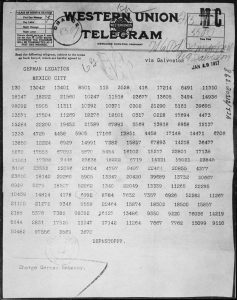 In the telegram, which was intercepted and deciphered by British intelligence in late January, Zimmermann instructed his ambassador, that in the event of a German war with the United States, to offer significant financial aid to Mexico, provided Mexico agreed to enter the conflict as a German ally. Germany also promised to restore to Mexico the lost territories of Texas, New Mexico and Arizona. Now, when you think about it, that is some big promises for Germany to be making, but I supposed that if the event of a loss in the war, all promises were null and void.
In the telegram, which was intercepted and deciphered by British intelligence in late January, Zimmermann instructed his ambassador, that in the event of a German war with the United States, to offer significant financial aid to Mexico, provided Mexico agreed to enter the conflict as a German ally. Germany also promised to restore to Mexico the lost territories of Texas, New Mexico and Arizona. Now, when you think about it, that is some big promises for Germany to be making, but I supposed that if the event of a loss in the war, all promises were null and void.
Upon learning about the proposed agreement between Germany and Mexico, the State Department was quick to send a copy of the Zimmermann Telegram to 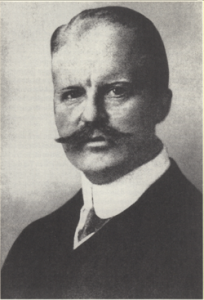 President Wilson. The president was shocked by the note’s content and the next day proposed to Congress that the United States should start arming its ships against possible German attacks. Wilson also authorized the State Department to publish the telegram. It appeared on the front pages of American newspapers on March 1, and it left many Americans horrified. The telegram was quickly declared a forgery by the public, but two days later, Zimmermann himself announced that it was genuine.
President Wilson. The president was shocked by the note’s content and the next day proposed to Congress that the United States should start arming its ships against possible German attacks. Wilson also authorized the State Department to publish the telegram. It appeared on the front pages of American newspapers on March 1, and it left many Americans horrified. The telegram was quickly declared a forgery by the public, but two days later, Zimmermann himself announced that it was genuine.
The Zimmermann Telegram helped turn the American public, already angered by repeated German attacks on United States ships, firmly against Germany. On April 2, President Wilson, who had initially sought a peaceful resolution to World War I, urged immediate United States entrance into the war. Four days later, Congress declared war against Germany, and the United States entered World War I on April 6, 1917.
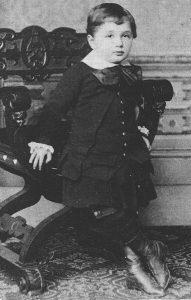 Albert Einstein has always been one of my favorite historic figures, so I decided to look for more information on him. I was surprised about some of the things I found out. Albert Einstein was born in Ulm, Germany in 1879, to parents Hermann Einstein and Pauline Einstein. Albert had a large head at the time he was born, so large, in fact that it startled his mother and grandmother when they saw him for the first time. The “fat” head slowly receded and turned into a normal size. Strangely, the head containing the brain of an amazing historic genius, was not so perfect at birth. Einstein did not speak until the age of three, odd for a genius. He revealed this fact about himself in his biography. Today there is a term, “Einstein Syndrome,” which was coined by Dr. Thomas Sowell, to describe exceptionally bright people whose speech is delayed. Einstein spent his teenage years in Munich, where his family operated an electrical equipment business. Galileo Galilei was Einstein’s favorite scientist.
Albert Einstein has always been one of my favorite historic figures, so I decided to look for more information on him. I was surprised about some of the things I found out. Albert Einstein was born in Ulm, Germany in 1879, to parents Hermann Einstein and Pauline Einstein. Albert had a large head at the time he was born, so large, in fact that it startled his mother and grandmother when they saw him for the first time. The “fat” head slowly receded and turned into a normal size. Strangely, the head containing the brain of an amazing historic genius, was not so perfect at birth. Einstein did not speak until the age of three, odd for a genius. He revealed this fact about himself in his biography. Today there is a term, “Einstein Syndrome,” which was coined by Dr. Thomas Sowell, to describe exceptionally bright people whose speech is delayed. Einstein spent his teenage years in Munich, where his family operated an electrical equipment business. Galileo Galilei was Einstein’s favorite scientist.
Albert Einstein’s lifelong love of science and math is no big secret, and in fact is what made him famous, that and his well know genius. That said, I was stunned to find out that his teachers did not  consider him a good student, and they refused to recommend him for further employment. It is said that at 16, Einstein failed an exam that would have allowed him train to become an electrical engineer. One of the things I found to be the most interesting is that Albert Einstein had a poor memory. He could not remember names, dates or phone numbers. I heard that he didn’t see the need to remember what he could have written down. Maybe this was why it needed to be written down. Most people know that he was given the Nobel Prize in 1921. It was the Nobel Prize in Physics that was awarded to Albert Einstein “for his services to Theoretical Physics, and especially for his discovery of the law of the photoelectric effect.” But, Einstein had a funny side too, and would have fit right in with the kids of today…at least in his picture taking. I really it wasn’t a selfie, but as selfies go, it fit right in with that the kids of today are doing, and apparently he though it was just as funny as they do. He was sure pleased with this one.
consider him a good student, and they refused to recommend him for further employment. It is said that at 16, Einstein failed an exam that would have allowed him train to become an electrical engineer. One of the things I found to be the most interesting is that Albert Einstein had a poor memory. He could not remember names, dates or phone numbers. I heard that he didn’t see the need to remember what he could have written down. Maybe this was why it needed to be written down. Most people know that he was given the Nobel Prize in 1921. It was the Nobel Prize in Physics that was awarded to Albert Einstein “for his services to Theoretical Physics, and especially for his discovery of the law of the photoelectric effect.” But, Einstein had a funny side too, and would have fit right in with the kids of today…at least in his picture taking. I really it wasn’t a selfie, but as selfies go, it fit right in with that the kids of today are doing, and apparently he though it was just as funny as they do. He was sure pleased with this one.
One of the most interesting things I found out was that Einstein was offered the opportunity to become  president of Israel after the its first president died in 1952. Einstein politely refused the offer, saying that he did not have the natural aptitude and experience to deal with people properly. He said that he could only understand a little of science and none of human nature. A little of science!!! Really!! I suppose that a genius would know and realize that just like the Bible, our understanding of science has only scratched the surface. Sadly, Albert Einstein had a “practical” view, if you will, of human life. He could have lived longer than he did. But, before he died, doctors suggested surgery to Einstein, because he suffered from a burst blood vessel. However, Einstein refused, stating, “It is tasteless to prolong life artificially.” I don’t understand why he ended such brilliance by refusing an operation that could save him. I find that very sad.
president of Israel after the its first president died in 1952. Einstein politely refused the offer, saying that he did not have the natural aptitude and experience to deal with people properly. He said that he could only understand a little of science and none of human nature. A little of science!!! Really!! I suppose that a genius would know and realize that just like the Bible, our understanding of science has only scratched the surface. Sadly, Albert Einstein had a “practical” view, if you will, of human life. He could have lived longer than he did. But, before he died, doctors suggested surgery to Einstein, because he suffered from a burst blood vessel. However, Einstein refused, stating, “It is tasteless to prolong life artificially.” I don’t understand why he ended such brilliance by refusing an operation that could save him. I find that very sad.

 The process of trying to end a war and bring peace between nations is a tricky one, and one that can end up being highly volatile, or even explode into further fighting!! The world was in the midst of World War I, and an armistice had been signed between Russia and Germany. The Soviet government had requested peace negotiations on Nov. 8, 1917. They began on December 22, 1917, nearly three weeks after a ceasefire was declared on the Eastern Front. Representatives of the two countries began peace negotiations at Brest-Litovsk, near the Polish border in what is now the city of Brest, in Belarus. They were divided into several sessions. During this time, the Soviet delegation tried to prolong the proceedings, so they could take full advantage of the opportunity to issue propaganda statements. Meanwhile, the Germans grew increasingly impatient with the delays.
The process of trying to end a war and bring peace between nations is a tricky one, and one that can end up being highly volatile, or even explode into further fighting!! The world was in the midst of World War I, and an armistice had been signed between Russia and Germany. The Soviet government had requested peace negotiations on Nov. 8, 1917. They began on December 22, 1917, nearly three weeks after a ceasefire was declared on the Eastern Front. Representatives of the two countries began peace negotiations at Brest-Litovsk, near the Polish border in what is now the city of Brest, in Belarus. They were divided into several sessions. During this time, the Soviet delegation tried to prolong the proceedings, so they could take full advantage of the opportunity to issue propaganda statements. Meanwhile, the Germans grew increasingly impatient with the delays.
The leader of the Russian delegation was Leon Trotsky, the Bolshevik People’s Commissar for Foreign Relations. Max Hoffmann, the commander of German forces on the Eastern Front, served as one of the chief negotiators on the German side. The main difference of opinion in Brest-Litovsk was over the surrender of Russian land to the Germans. The Russians demanded a peace agreement without annexations or indemnities and the Germans were unwilling to concede on this point. In February 1918, Trotsky announced he was withdrawing the Russians from the peace talks, and the war was on again. This would turn out to be one of the biggest, if no the biggest mistake of his career.
With the renewal of fighting, the Central Powers quickly took the upper hand. In a way, it was Russia against the world, and Russia was not likely to win that one. The Central Powers quickly seized control of most of Ukraine and Belarus. The Bolshevik hope that the workers of Germany and Austria, offended by their governments’ obvious territorial ambition, would rise up in rebellion in the name of the international working class people, soon vanished. Russia was fighting a losing battle, and they would have to surrender in the end.
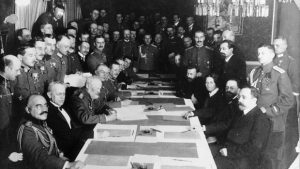
The end came on March 3, 1918, when Russia accepted peace terms that were even more harsh than those originally suggested by Germany. Russia would lose Poland, Lithuania, and the Baltic states of Estonia, Livonia, and Courland to Germany. To further devastate Russia’s hopes, Finland and the Ukraine saw Russia’s weakness as an opportunity to declare their independence. In all, Brest-Litovsk deprived Lenin’s new state of one million square miles of territory and one-third of its population, about 55 million people. Sometimes, it’s better to settle, rather than risk a loss far more devastating.
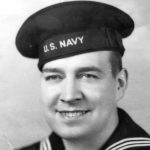 When we think of the name Hitler, most of us think of the vicious dictator who was responsible for the slaughter of as many a 6 million Jewish people, not to mention all the other people he killed in his crazed state of mind. For most of us, hearing the name Hitler brings with it feelings of horror, disgust, and continued shock every time we learn a new fact about Hitler and his Third Reich. Yes, the name Hitler doesn’t usually bring any feelings of…anything good. Well, what I learned today, changed my view of that. You see, not everyone named Hitler was evil, not even everyone named Hitler during World War II, and not even everyone who had the unfortunate…misfortune of being related to Adolf Hitler. You see, for William Patrick Hitler of Liverpool, England, having the name wasn’t the worst part of his situation. William was actually the nephew of Adolf Hitler, the Führer of Nazi Germany. It was a reality that made him almost nauseous. Dealing with that reality would take William on a zigzag path leading to Germany, England, America, and finally the United States Navy. I’m sure that you, like me, thought, “How could the United States Navy allow a nephew of Adolf Hitler to join up, much less to muster out with men sent to fight his uncle.
When we think of the name Hitler, most of us think of the vicious dictator who was responsible for the slaughter of as many a 6 million Jewish people, not to mention all the other people he killed in his crazed state of mind. For most of us, hearing the name Hitler brings with it feelings of horror, disgust, and continued shock every time we learn a new fact about Hitler and his Third Reich. Yes, the name Hitler doesn’t usually bring any feelings of…anything good. Well, what I learned today, changed my view of that. You see, not everyone named Hitler was evil, not even everyone named Hitler during World War II, and not even everyone who had the unfortunate…misfortune of being related to Adolf Hitler. You see, for William Patrick Hitler of Liverpool, England, having the name wasn’t the worst part of his situation. William was actually the nephew of Adolf Hitler, the Führer of Nazi Germany. It was a reality that made him almost nauseous. Dealing with that reality would take William on a zigzag path leading to Germany, England, America, and finally the United States Navy. I’m sure that you, like me, thought, “How could the United States Navy allow a nephew of Adolf Hitler to join up, much less to muster out with men sent to fight his uncle.
Born March 12, 1911, in Liverpool, England, William Hitler was the only child of Bridget Dowling and her Austrian expatriate husband, Alois Hitler Jr, who was the half-brother of Adolf Hitler. In 1914, Alois abandoned his wife and three year old son to go traveling through Europe. The outbreak of World War I prevented him from returning to England, so he settled down in Germany, married again, despite still being married to Dowling, and started a new family. For years, Alois made no attempt to contact his wife and son back in Liverpool, but rather had someone tell Dowling that he was dead. In 1924, the truth came out. Alois was charged with bigamy in Germany, but avoided conviction because Dowling actually interceded on his behalf. That was all she did however. She drew the line, when Alois asked her to send William to Germany for a visit. She told him that she would not let her son visit until he reached his 18th birthday, in 1929. Upon turning 18, William traveled to Germany and reconnected with his father, who took him to a Nazi rally where he saw his Uncle Adolf, leader of the rising National Socialist (Nazi) Party. William visited Germany again in 1930, this time 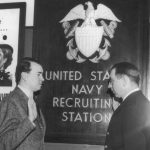 meeting his uncle in person and receiving an autographed photo from him.
meeting his uncle in person and receiving an autographed photo from him.
I’m sure that William thought that his relationship with his uncle would be something that would advance his journalism career, but Hitler didn’t want anyone to know what he was doing. William’s articles about his Uncle Adolf Hitler, only served to be the beginning of being blackballed from everything to do with Adolf Hitler, and his disgust with Adolf Hitler and his insane ways. Hitler called William to Berlin, and reportedly ordered him to retract the articles. Now William saw a totally different side of his uncle…describing it as a “wild-eyed and tearful” outburst. Apparently Hitler even threatened to kill himself if William ever again published anything about his personal life. Now, William became persona non grata in England. He was fired from his job in 1932. Unable to find other employment in his homeland, he decided to look for work in Germany. Perhaps his increasingly influential uncle could be persuaded to help, but no warm welcome awaited in Germany. According to William, whose July 4, 1939 article for Look magazine, “Why I Hate My Uncle,” is the sole source on his dealings with his uncle Adolf Hitler, who sent William a letter during his visit, denying they were relatives. Shortly afterward, William’s father sent him back to England. I guess he was persona non grata with his dad too.
William tried using his relationship to Hitler to obtain a job in Germany, and was successful, but when he tried to send money to his mother, he was informed that Hitler would not allow it…even for family. William began to see a much more evil side of his uncle. Eventually, he left Germany and went back to England, but found that he was not welcome there either. He and his mother moved to the United States, where his relationship again caused him problems. Finally, in 1942, William wrote directly to President Franklin D. Roosevelt, begging to be allowed to serve in the US military. “I am one of many, but can render service to this great cause,” he wrote. FDR passed the letter on to FBI Director J. Edgar Hoover, who looked into William’s background and finally cleared him for military service. Sworn into the US Navy in New York City on March 6, 1944, William Hitler went on to serve three years as a pharmacist’s mate, receiving the Purple Heart for a wound he suffered. He was 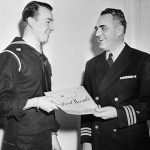 discharged in 1947.
discharged in 1947.
Finally tired of the attention his controversial surname attracted, William changed it to Stuart-Houston after returning to the civilian world. He married German-born Phyllis Jean-Jacques, and the couple settled in Patchogue on New York’s Long Island, where they had four children, the first of whom bore the surprising middle name of Adolf. William ran a blood analysis lab, Brookhaven Laboratories, in his family’s home. William Stuart-Houston died on July 14, 1987, and was buried next to his late mother in Coram, New York. His children did not produce any children of their own…and so ended the line.
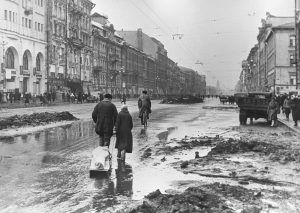 When an evil empire, such as Hitler’s regime in Nazi Germany, decides to rule the world, they begin to take over neighboring nations…by any means possible. If the nation is too weak to fight, it is easy, but if the nation can fight it becomes much harder to succeed. Nevertheless, they always seem to find a way, if they are determined enough. And Hitler was nothing, if not determined. The Nazis invaded the Soviet Union in late September, and surrounded Leningrad soon after. The months that followed, found the people of the city trying to establish supply lines from the Soviet interior and attempting to evacuate its citizens. It was a tough process and they often found themselves using a hazardous “ice and water road” across Lake Ladoga. A successful land corridor was finally created in January 1943, and the Red Army finally managed to drive off the Germans the following year. Nevertheless, all that took time, and in the end, the siege lasted nearly 900 days and resulted in the deaths of more than 1 million Soviet civilians.
When an evil empire, such as Hitler’s regime in Nazi Germany, decides to rule the world, they begin to take over neighboring nations…by any means possible. If the nation is too weak to fight, it is easy, but if the nation can fight it becomes much harder to succeed. Nevertheless, they always seem to find a way, if they are determined enough. And Hitler was nothing, if not determined. The Nazis invaded the Soviet Union in late September, and surrounded Leningrad soon after. The months that followed, found the people of the city trying to establish supply lines from the Soviet interior and attempting to evacuate its citizens. It was a tough process and they often found themselves using a hazardous “ice and water road” across Lake Ladoga. A successful land corridor was finally created in January 1943, and the Red Army finally managed to drive off the Germans the following year. Nevertheless, all that took time, and in the end, the siege lasted nearly 900 days and resulted in the deaths of more than 1 million Soviet civilians.
The German and Finnish forces besieged Lenin’s namesake city after their spectacular initial advance during Operation Barbarossa in the summer of 1941. Nevertheless, it was not going to be an easy task to bring the Soviet people into submission. A German Army Group struggled against stubborn Soviet resistance to isolate and seize the city before the onset of winter. The fighting was heaviest during August. German forces reached the city’s suburbs and the shores of Lake Ladoga, severing Soviet ground communications with the city. In 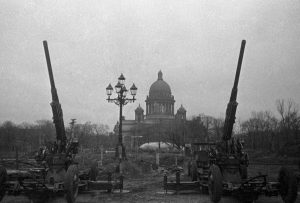 November 1941, Soviet forces repelled a renewed German offensive and clung to tenuous resupply routes across the frozen waters of Lake Ladoga. After that, German and Soviet strategic attention shifted to other more critical sectors of the Eastern Front, and Leningrad…its defending forces and its large civilian population…endured an 880 day siege of unparalleled severity and hardship. I simply can’t imagine the cruelty of a regime that would let a million people starve to death to obtain power. Despite desperate Soviet use of an “ice and water road” across Lake Ladoga to resupply its three million encircled soldiers and civilians and to evacuate one million civilians, over one million civilians perished during that bitter siege. Another 300,000 Soviet soldiers died defending the city or attempting to end the siege. In January 1943, Soviet forces opened a narrow land corridor into the city through which vital rations and supplies again flowed. But it was not until January 1944, that the Red Army successes in other front sectors enable the Soviets to end the siege. By this time, the besieging German forces were so weak that renewed Soviet attacks drove them away from the city and from Soviet soil. Determination simply wasn’t enough to win that victory for Hitler.
November 1941, Soviet forces repelled a renewed German offensive and clung to tenuous resupply routes across the frozen waters of Lake Ladoga. After that, German and Soviet strategic attention shifted to other more critical sectors of the Eastern Front, and Leningrad…its defending forces and its large civilian population…endured an 880 day siege of unparalleled severity and hardship. I simply can’t imagine the cruelty of a regime that would let a million people starve to death to obtain power. Despite desperate Soviet use of an “ice and water road” across Lake Ladoga to resupply its three million encircled soldiers and civilians and to evacuate one million civilians, over one million civilians perished during that bitter siege. Another 300,000 Soviet soldiers died defending the city or attempting to end the siege. In January 1943, Soviet forces opened a narrow land corridor into the city through which vital rations and supplies again flowed. But it was not until January 1944, that the Red Army successes in other front sectors enable the Soviets to end the siege. By this time, the besieging German forces were so weak that renewed Soviet attacks drove them away from the city and from Soviet soil. Determination simply wasn’t enough to win that victory for Hitler.
After November 1941, possession of Leningrad held only symbolic significance. In holding the “ice and water road” the Soviets were able to bring in enough supplies to stave of the ongoing starvation, so the siege has a 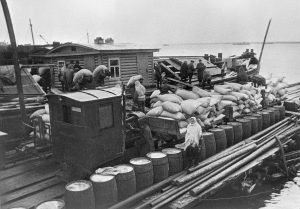 little less effect. The Germans maintained their siege with a single army, and defending Soviet forces numbered less than 15 percent of their total strength on the German-Soviet front. The Leningrad sector was clearly of secondary importance, and the Soviets raised the siege only after the fate of German arms had been decided in more critical front sectors. Despite its diminished strategic significance, the suffering and sacrifices of Leningrad’s dwindling population and defending forces inspired the Soviet war effort as a whole. No nation can lose that many people and not feel its impact. The siege ended on January 27, 1944, but I don’t think the people felt that it was such a big victory, considering the loss of life.
little less effect. The Germans maintained their siege with a single army, and defending Soviet forces numbered less than 15 percent of their total strength on the German-Soviet front. The Leningrad sector was clearly of secondary importance, and the Soviets raised the siege only after the fate of German arms had been decided in more critical front sectors. Despite its diminished strategic significance, the suffering and sacrifices of Leningrad’s dwindling population and defending forces inspired the Soviet war effort as a whole. No nation can lose that many people and not feel its impact. The siege ended on January 27, 1944, but I don’t think the people felt that it was such a big victory, considering the loss of life.
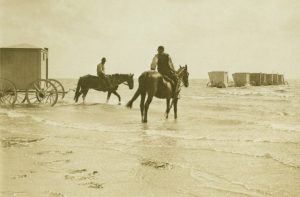 In the 18th and 19th century, going swimming was not done in the same way as it was today. While it was considered ok to swim, the clothing was not considered appropriate, and so men and women were segregated during swimming. I don’t suppose going to the beach was as common, and so it problem might not have come up every day, but it came up enough to create a need for a “proper” way to accomplish an outing involving swimming. Enter the Bathing Machine. The bathing machine was basically a small room built on wheels that could be taken to the beach. People entered the machine while it was on the beach, wearing their street clothing. In the machine they changed into their bathing suit, although men were allowed to bathe nude until the 1860s. They then placed their street clothes into a raised compartment in the bathing machine, where they would remain safe and dry.
In the 18th and 19th century, going swimming was not done in the same way as it was today. While it was considered ok to swim, the clothing was not considered appropriate, and so men and women were segregated during swimming. I don’t suppose going to the beach was as common, and so it problem might not have come up every day, but it came up enough to create a need for a “proper” way to accomplish an outing involving swimming. Enter the Bathing Machine. The bathing machine was basically a small room built on wheels that could be taken to the beach. People entered the machine while it was on the beach, wearing their street clothing. In the machine they changed into their bathing suit, although men were allowed to bathe nude until the 1860s. They then placed their street clothes into a raised compartment in the bathing machine, where they would remain safe and dry.
I believe that all bathing machines had small windows, but one writer in the Manchester Guardian of May 26, 1906 considered them “ill-lighted” and wondered why bathing machines were not improved with a skylight. Once the person had changed, the machine would be wheeled or slid into the water. The most common type of these machines had large wide wheels and were pulled in and out of the surf by a horse or a pair of horses with a driver, but there were some that were pushed in and out of the water by human power. Some resorts had wooden rails into the water for the wheels to roll on, and a few had bathing machines pulled in and out by cables propelled by a steam engine.
Once the machine was in the water, the occupants stepped out from the sea side, and proceeded down steps into the water. Many of the machines had doors front and back, but those with only one door would be backed into the sea or need to be turned around. The most essential element of the machines, was that it blocked any view of the bather from the shore. Some of the more luxurious machines were equipped with a canvas tent lowered from the seaside door, sometimes capable of being lowered to the water, giving the bather greater privacy. Bathing machines would often be equipped with a small flag which could be raised by the bather as a signal to the driver that they were ready to return to shore. Some resorts even employed a dipper, a strong 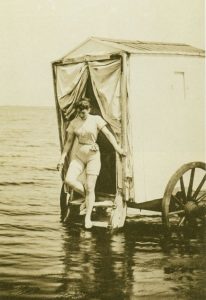 person of the same sex who would assist the bather in and out of the sea. Some dippers were said to push bathers into the water, then yank them out, considered part of the experience. Wow!! I’m not sure I would like that much, but then, to me this whole process seems like it would make the idea of bathing a bit too much of an undertaking, not to mention the added cost to go swimming, because I don’t think anyone would operate a bathing machine for free.
person of the same sex who would assist the bather in and out of the sea. Some dippers were said to push bathers into the water, then yank them out, considered part of the experience. Wow!! I’m not sure I would like that much, but then, to me this whole process seems like it would make the idea of bathing a bit too much of an undertaking, not to mention the added cost to go swimming, because I don’t think anyone would operate a bathing machine for free.
Bathing machines were most commonly used in the United Kingdom and parts of the British Empire with a British population, but were also used in France, Germany, the United States, Mexico, and other nations. Legal segregation of bathing areas in Britain ended in 1901, and the bathing machine declined rapidly. By the start of the 1920s, bathing machines were almost extinct, even on beaches catering to an older clientele. For those of us who grew up in the modern era, this process would seem like a bit of insanity, but then that was simply a different time.

